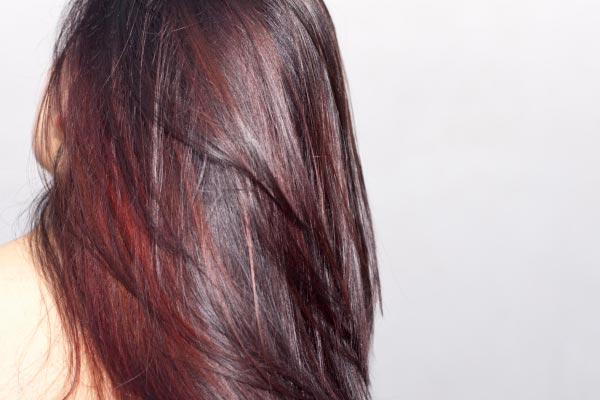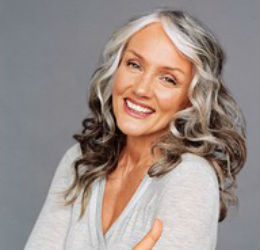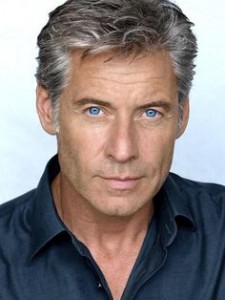By Vicky Uhland
You eat natural foods, wear natural fibers and even bathe your dog in natural shampoo. You celebrate everything organic, nontoxic, sustainable, and seasonal except when it comes to your hair. No matter how much you want to love your blah brown locks or venerate those stray gray hairs, you just can’t get your head around the slow descent into middle or old age.
So you color your hair, cringing every time you read the chemical concoctions in the ingredient list on the hair dye box. You worry that your artificially enhanced coif may literally be the death of you, causing serious allergies or, at the worst, cancer. You scan the studies for information about whether coloring your hair during pregnancy may harm your baby. You stress so much over your tresses, you create even more gray hairs to be cosmetically covered.
But many medical professionals believe that in the long list of substances that can kill you, hair dye falls near the bottom. “It’s certainly not as dangerous as smoking”, says Vincent DeLeo, MD, chairman of dermatology at St. Luke’s-Roosevelt and Beth Israel Medical Centers in New York. It also seems that for every study that links hair dye with cancer, another says the opposite. A 2004 study published in The American Journal of Epidemiology found that women who began coloring their hair before 1980 had an increased risk of lymphoma. But a 2005 Spanish evaluation of 39 years worth of hair dye studies found no strong evidence that coloring your hair makes you more susceptible to cancer.
A study published in 2001 in the International Journal of Cancer found that women who used permanent hair dyes at least once a month had twice the risk of bladder cancer as nonusers, and yet, a 2006 study conducted by the University of Texas’ Department of Epidemiology discovered no link between hair dye use and bladder cancer.
So what’s a dull-tressed, health-conscious lass or lad to do? The ideal solution would be using an all-natural hair dye. But the only commercial colorant completely free of chemicals is henna, and that won’t lighten dark hair or give you many color choices. Other plant-based dyes include chamomile, lemon juice, indigo leaves, walnut, and black tea, but they can’t transform your tresses from Janis Joplin brown to Gwen Stefani platinum. “These ingredients are stains at best and only last at most a day or two, and even then usually take unevenly. They work like food coloring would on your skin, says Robert Craig, a Manhattan hairstylist who developed the natural hair dye line Color by Robert Craig.
That doesn’t mean your only other option is a dye made entirely from unpronounceable synthetic ingredients. A growing number of companies produce natural hair dyes with fewer harmful additives and minimal health risks.
Hair color 101
Most people think hair dyes work like a paint that covers each strand of hair, but that’s only half the story. Whether or not that paint permeates the hair determines the type of dye. Semi-permanent dyes coat your hair with color, while permanent dyes use ammonia or hydrogen peroxide to open the hair cuticle, allowing the dye to penetrate each individual hair and actually change the color from the inside out. Permanent dyes remain in your hair until it grows out, while semi-permanent dyes fade with each shampoo.
Many natural permanent dyes don’t contain ammonia. “They still color gray beautifully but you don’t have that horrible ammonia smell, says Eva Scrivo, owner of Eva Scrivo Salon in Manhattan. Scrivo uses ammonia-free Herbatint, which she says actually improves hair’s shine and texture. “Ammonia is so dehydrating and drying, far more so than hydrogen peroxide, that it can really damage your hair. Ammonia can also irritate the skin, says DeLeo.
Whether semi-permanent or permanent, conventional or natural, hair dyes also include chemicals that actually create the color. According to Erica Barroso, a Sao Paolo, Brazil-based chemist with Surya Brasil hair color, conventional dyes can contain lead acetate, acid, and petrochemicals.
The Environmental Working Group links lead acetate to cancer and allergies. You won’t find this toxic cocktail in Surya Brasil and other natural colorants, including Herbatint and Naturtint. However, Herbatint and Naturtint do contain resorcinol, a resin that helps develop the color. EWG says resorcinol may disrupt the reproductive system.
Another questionable ingredient is p-Phenylenediamine, or PPD. It reacts with oxygen to help make the hue advertised on the hair dye box. EWG links it to cancer, and the Contact Dermatitis Society named it “Contact Allergen of the Year for 2006 because so many people report scaly, crusty skin or red bumps after using hair dye with PPD. Lighter shades of dye contain less PPD than dark colors, and many natural hair colors have less than half as much PPD as their conventional counterparts, but DeLeo says any amount of PPD can cause allergies.
“If you’re a very allergenic person and get skin rashes from different products, then you may not want to use hair dye at all, he notes. Or try a PPD-free formula such as Surya Brasil’s Henna Cream for home use, or Goldwell’s Elumen Hair Color, which is only available in salons.
To find out if you’re allergic to hair dye, DeLeo recommends a patch test. Dab a little dye onto your skin and wait 24 to 48 hours to see if a reaction occurs.
The bottom line for every hair dye except henna? All of them contain some synthetic ingredients, and figuring out just how bad stuff like 3-Naphthalenediol really is for you can be tough for even the savviest naturals consumer.
For help, check out the European Commission’s list of banned hair dye substances which went into effect in Europe in December.
(http://ec.europa.eu/enterprise/cosmetics/doc/2006_65/dir_2006_65_en.pdf)
But what about the baby?
Hair dye that touches the scalp can be absorbed into the skin and then into the bloodstream, and if you’re pregnant, that dye-spiked blood can penetrate the placenta and travel into your baby’s bloodstream, says Michael Kamrava, MD, director of the West Coast Infertility Medical Clinic in Beverly Hills, California.
Very few studies exist on how hair dye affects pregnant women. The Organization of Teratology Information Specialists, which analyzes the risk of birth defects, reports that studies on animals show no significant changes in fetal development with exposure to hair dye. Still, obstetricians like Kamrava are cautious about okaying hair dye for their pregnant patients. “Anything that gets into the bloodstream of the baby could affect the programming of the enzymes and proteins in cell development, he says. This is especially critical during the first three months of pregnancy, when the baby’s internal organs and limbs form. For that reason, Kamrava recommends either not using hair dye at all during the first trimester, or opting for highlights that don’t actually reach all the way to the scalp.
For everyone else, most doctors give a heads up to hair dye. “I think it’s relatively safe, but there is a risk, says DeLeo. “You need to weigh that risk against your feeling about how you want to look. Vicky Uhland is a Lafayette, Colorado-based freelance writer who has tried every hair color but gray.
Color Care
There are a variety of shampoos, conditioners, gels, and sprays that help protect your pricey new hair color. The natural and organic products include plant extracts that intensify color tones and block ultraviolet rays that can cause color to fade. For blondes, lemon, chamomile, sunflower, and marigold help lighten hair. Color enhancers for redheads include henna, madder root, and berry extracts. For brunettes, look for black malva, black walnut, black tea, coffee, and licorice root. Sun filters include cinnamon, wintergreen, and jojoba oil. Apple cider vinegar also helps lock in hair color, says Manhattan hairstylist John Masters, developer of John Masters Organics hair care.
Along with the John Masters line, other natural and organic color-care hair products include Jason’s Color Enhancing System, ShiKai’s Color Enhancing line, and Aveda’s Color Conserve and Color Enhancing shampoos and conditioners. The Aveda products contain either paraben preservatives, which have been linked to breast cancer, or urea, which the Environmental Working Group says may cause skin irritation and gastrointestinal or liver problems. The ShiKai products also contain urea.
Going Gray Gracefully
You’ve decided to stop coloring your hair and embrace your gray locks. But how do you prevent that stripe in the middle of your head where your natural color begins and your artificial color ends?
“You can strip out all the permanent color, but that takes a lot of chemicals, says Manhattan hairstylist John Masters, owner of John Masters Organics salon. “They smell horrible and they’re very, very drying for your hair.
Most stylists recommend simply cutting your hair short to get rid of the leftover color, but if that’s too traumatic for you, Masters suggests adding “a ton of highlights, followed by a violet or blue semi-permanent hair color that will turn those highlights gray. Although highlighting products contain bleach, Masters says some are less toxic than others. He likes Naturelite Oil from Organic Color Systems, which is available only in salons.
Guys and Dye
Hair dye for men has evolved far beyond Grecian Formula. An increasing number of guys opt not only to transform their gray manes, but also to spice up their natural color. While hair dye products are the same for men and women, the techniques vary considerably.
“Men don’t take as good of care of their hair as women do€for instance, they typically don’t use conditioner€so their hair can be drier and more porous, says Eva Scrivo, owner of Eva Scrivo Salon in Manhattan. Hair dye penetrates porous hair more easily, so men may need to use less color or leave it in for a shorter amount of time. Stylists also recommend that guys who want to cover gray not coat their entire head with color but instead opt for lowlights€darker streaks that match their natural color€so their hair doesn’t look dyed. “It’s not socially acceptable for men to have roots, Scrivo says. “It needs to look like it’s their natural color.
You stress so much over your tresses, you create even more gray hairs to be cosmetically covered. For every study that links hair dye with cancer, another says the opposite. A growing number of companies produce natural hair dyes with fewer harmful additives and minimal health risks.










